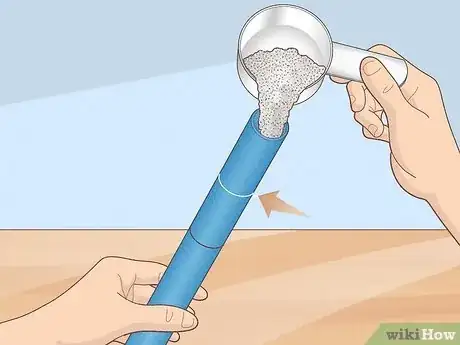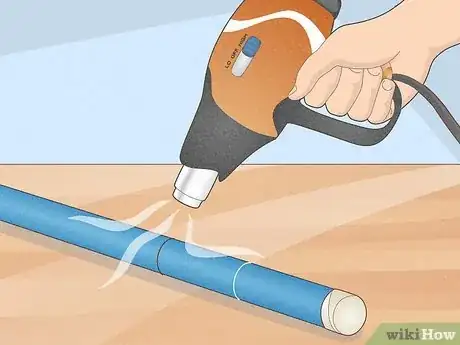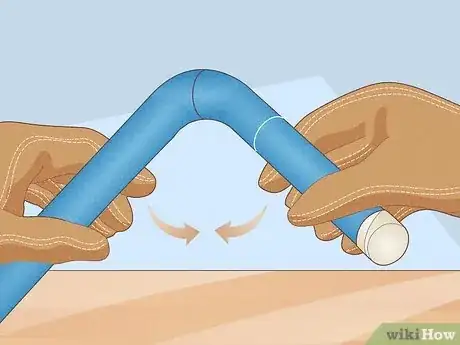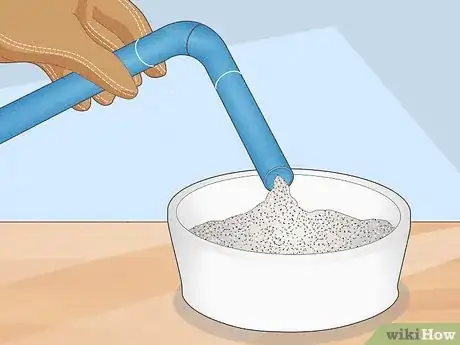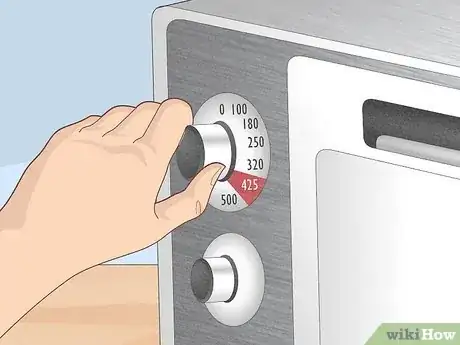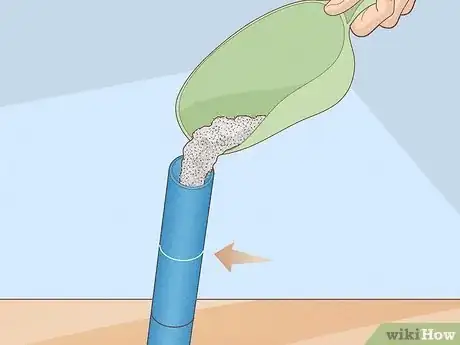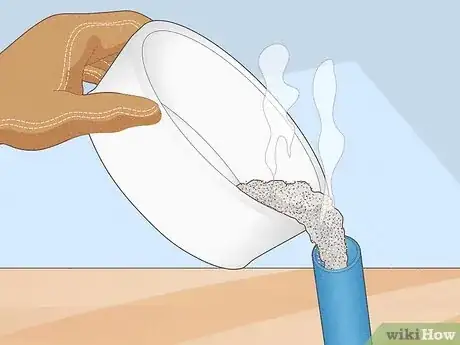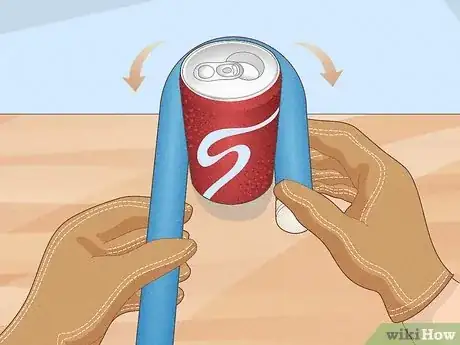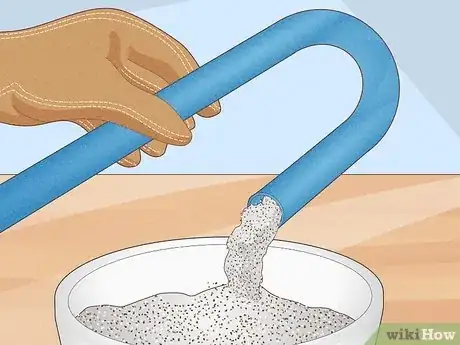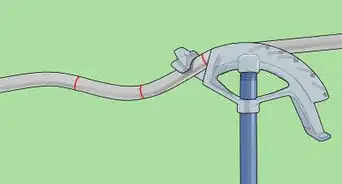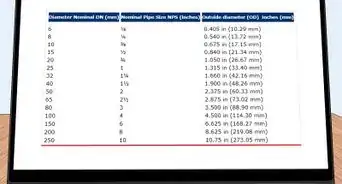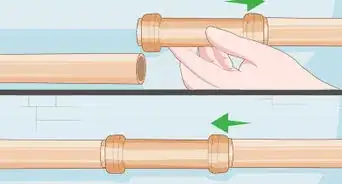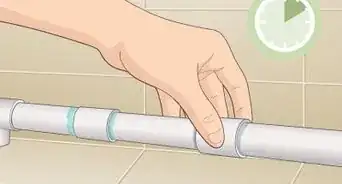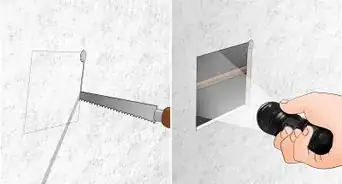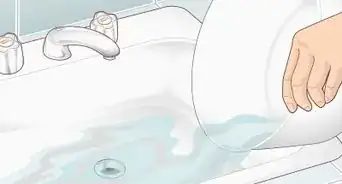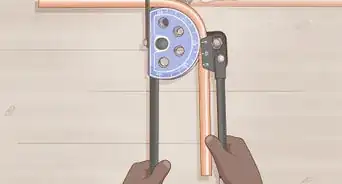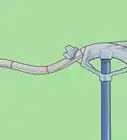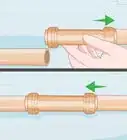This article was co-authored by Patrick Johns. Patrick Johns is a Home Improvement Specialist and the Owner of CatchAll Handyman Services. With more than 28 years of experience, he has worked on a variety of home improvement projects, such as carpentry, plumbing, and door and window installations in both commercial and residential properties.
This article has been viewed 52,845 times.
PVC, or polyvinyl chloride, is a tough, strong material with an excellent combination of physical and electrical properties. Bending it, luckily enough, does not require a ton of professional equipment, as long as you piece is small enough to be easily worked by one person. All you need is some sand and a heat source.
Steps
Using a Hairdryer or Heat Gun
-
1Fill the pipe with enough sand to cover two to three inches above the planned bend. Make a mark where the center of the bend needs to be, then mark an extra six to eight inches on either side of this center mark. This will be your "heat zone," where you need to direct the heat.
- Keep any planned bends at least three to five inches away from any joints.
- You may need to block the end of the pipe with tape to prevent the sand from falling out.
-
2Apply the heat evenly around your planned bend. The sand inside will make this take longer, but it also ensures that the pipe holds its form and doesn't cave or warp. Turn the pipe regularly, applying heat to the inner and outer bend throughout your entire marked heat zone.
- Keep the heat source at least two to three inches away from the pipe to prevent burning the PVC.
Advertisement -
3Slowly bend the pipe, applying more heat as necessary. Keep applying heat and bending until you get your desired shape. If you want a perfect bend, use a metal can or object to provide a "mold" for you bend.[1]
-
4Remove the sand and let the pipe cool. Do not try and keep bending the pipe after the sand is removed. This can cause cracks and warping. You can save the sand to use again.
Using an Oven
-
1Use hot sand to fill the pipe and bend it without collapsing. Under too much heat and stress, the PVC may crack or warp without a medium inside to help it hold its shape. The best candidate — sand. Get enough sand to fill up the pipe a few inches past the planned bend.
- You may need to use some tape to block one end of the pipe and keep the sand in.
- Try not to bend the pipe any closer than 3–5" away from a joint.
-
2Heat your oven to 425 °F (281.3 °C). You don't need to wait for it to pre-heat completely, but turn it on now to get some heat built up.
-
3Fill the pipe with sand so that it is a few inches past the bend. Block off one end of the pipe and measure out how much sand you'll need to fill the pipe with sand. You don't have to fill the entire pipe, just fill it until the sand is a few inches past where you plan to bend the PVC.
-
4Pour the sand into an oven-safe dish and put it in the oven.
- Let the sand heat up with the oven. After the oven has hit 425 °F (281.3 °C), leave the sand in an extra five to six minutes to get up to the right temperature.
- If you have a lot of sand, more than two to three cups, stir it halfway through so that the sand heats up evenly.[2]
-
5Carefully pour the hot sand back into the PVC pipe. Make sure you wear protective gloves or oven mitts. Let the sand heat the pipe up for a few minutes, until the PVC feels pliable.
-
6Slowly bend the pipe into your desired shape. Once the pipe is soft, it should easily bend by hand. For a rounder, more even bend, use an old can or similar round, heatproof object and bend the pipe around that.
-
7Empty the sand out and let the pipe cool. Leave the pipe undisturbed and let it cool back to room temperature. Do not try and bend the pipe again once you've removed the sand. You can also save the sand to use later, reheating it as many times as you want to bend new pipes.
Community Q&A
-
QuestionHow do I bend 6 meter PVC 80 4 clear pipe without heat?
 Community AnswerFittings. Any chemical treatment will destroy the PVC's structural integrity.
Community AnswerFittings. Any chemical treatment will destroy the PVC's structural integrity.
Warnings
- If you're using the pipe for plumbing, be sure to pressure test it before installation.⧼thumbs_response⧽
- Sometimes, bending the pipe can cause breakage and leaks.[3]⧼thumbs_response⧽
- In some cases, it's easier and safer to use quarter turns or half turns to get the angle you need, instead of bending the pipe.[4]⧼thumbs_response⧽
References
- ↑ http://www.finehomebuilding.com/how-to/tips/bend-pvc-pipe.aspx
- ↑ http://www.finehomebuilding.com/how-to/tips/bend-pvc-pipe.aspx
- ↑ Patrick Johns. Home Improvement Specialist. Expert Interview. 26 October 2021.
- ↑ Patrick Johns. Home Improvement Specialist. Expert Interview. 26 October 2021.
About This Article
To bend PVC pipe, start by filling the pipe with sand. Then, pour the sand into an oven-safe dish, and heat it in the oven at 425 degrees Fahrenheit for 5-6 minutes. Next, put on some gloves and carefully pour the sand back into the pipe, letting it stand until the PVC pipe feels pliable. Finally, slowly bend the PVC pipe into your desired shape before dumping the sand out of it. To learn how to bend PVC pipe using a hairdryer or a heat gun, scroll down!
